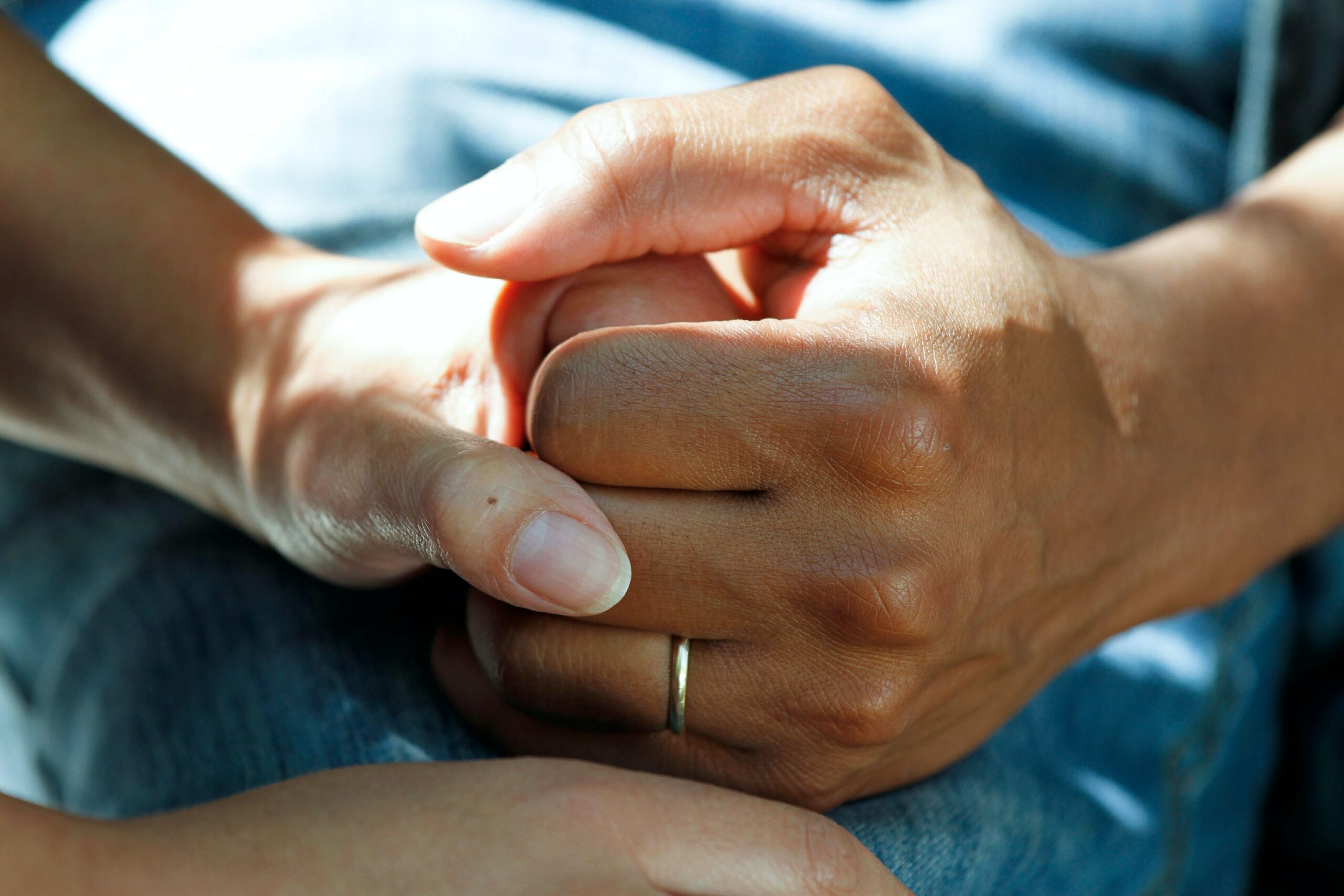What do you think of this article?
By Dr. David Woo - April 9, 2021

Transcranial magnetic stimulation (TMS) is a non-invasive, medication-free treatment for major depression. TMS uses magnetic pulses to normalize brain activity in regions of the brain associated with mood.
Traditionally, TMS is administered to the left side of the brain, but it can also be performed on the right side (or on both sides). What’s the difference between TMS on the right side of the head vs. on the left? To understand the answer to this question, it’s first helpful to know how abnormal activity in different parts of the brain contributes to depression.
Which Parts of the Brain Are Associated with Depression?
Depression is associated with dysregulation in the actions of a specific region of the brain, called the dorsolateral prefrontal cortex (DLPC). More specifically, depression is associated with lower than normal activity in the left DLPC and higher than normal activity in the right DLPC.(1,2) Scientists have also linked the right DLPC with the physiological symptoms of anxiety, like sweating and increased heart rate.(3,4) As many as half of the people with depression also experience anxiety.(5)
Different frequencies of TMS can be applied to either side or both sides of the DLPC to treat depression symptoms. For example, high-frequency TMS causes an increase in brain activity, while low-frequency TMS results in a decrease in brain activity.
Left TMS (TMS on the Left Side of the Head)
TMS is traditionally and most commonly performed on the left DLPC using high-frequency magnetic pulses. Since an underactive left DLPC contributes to depression, doctors apply high-frequency TMS to stimulate this brain region.(6)
Left TMS is the most studied form of TMS, as clinical trials that led to the FDA-clearance of TMS for depression treatment used left TMS.(7) But studies show that right TMS and bilateral TMS are also safe and successful in treating depression symptoms. Aside from efficacy, most doctors prefer left TMS because most insurance plans cover treatment with left TMS. Some insurance plans require that TMS be performed on the left with a certain frequency, others allow the physician to choose left or right, and other plans do not ask for physicians to specify.
Right TMS (TMS on the Right Side of the Head)
Doctors may perform right TMS for patients who, in addition to depression, also exhibit symptoms of anxiety. An overactive right DLPC is associated with depression and anxiety symptoms. Low-frequency TMS is applied to the hyperactive right DLPC to calm brain activity in this region.(6) Studies show that right TMS provides similar results to left TMS in treating depression symptoms in patients who are resistant to antidepressants.(8) However, right TMS may not be available to patients whose insurance plan does not cover it.
Bilateral TMS Treatment (TMS on Both Sides of the Head)
Bilateral TMS refers to a TMS session where a patient receives both right and left TMS. Some doctors may prefer to use bilateral TMS for patients who have difficult-to-treat or severe depression.
A recent study shows that a bilateral TMS protocol provides positive results for patients who are suicidal. The study results show that 40% of participants diagnosed with hard-to-treat depression who were also suicidal no longer experienced suicidal thoughts after treatment with bilateral TMS.(9,10) However, bilateral TMS may or may not be covered by the patient’s insurance.
Want to Learn More About TMS for Depression?
If you’d like to learn more about how TMS may help with depression symptoms, talk to your doctor. In some cases, TMS can be combined with antidepressants to augment their therapeutic effects. If you’re experiencing symptoms of depression, or are a mental health professional interested in TMS for patients, please contact us online or call us at 212.731.2033.
Resources:
1. Fitzgerald PB, Hoy K, Gunewardene R, et al. A randomized trial of unilateral and bilateral prefrontal cortex transcranial magnetic stimulation in treatment-resistant major depression. Psychol Med. 2011;41:1187-96.https://pubmed.ncbi.nlm.nih.gov/20925972/. Accessed March 09, 2021.
2. Hecht D. Depression and the hyperactive right-hemisphere. Neuroscience Research. 2010:68(2);77-87. https://pubmed.ncbi.nlm.nih.gov/20603163/. Accessed March 09, 2021.
3. Balderston NL, Beydler EM, Roberts C, Deng ZD, Radman T, Lago T, Luber B, Lisanby SH, Ernst M, Grillon C. Mechanistic link between right prefrontal cortical activity and anxious arousal revealed using transcranial magnetic stimulation in healthy subjects. Neuropsychopharmacology. 2020;45(4):694-702. https://www.ncbi.nlm.nih.gov/pmc/articles/PMC7021903/. Accessed March 09, 2021.
4. Anxiety Disorders. MayoClinic. https://www.mayoclinic.org/diseases-conditions/anxiety/symptoms-causes/syc-20350961 Published May 04, 2018.
5. Hirschfeld RMA. The Comorbidity of Major Depression and Anxiety Disorders: Recognition and Management in Primary Care. Prim Care Companion J Clin Psychiatry. 2001;3(6):244-254. https://pubmed.ncbi.nlm.nih.gov/15014592/. Accessed March 10, 2021.
6. Milev RV, Giacobbe P, Kennedy SH, et al. CANMAT Depression Work Group. Canadian Network for Mood and Anxiety Treatments (CANMAT) 2016 Clinical Guidelines for the Management of Adults with Major Depressive Disorder: Section 4. Neurostimulation Treatments. Can J Psychiatry. 2016;61(9):561-575.
7. O’Reardon JP, Solvason HB, Janicak PG, et al. Efficacy and safety of transcranial magnetic stimulation in the acute treatment of major depression: a multisite randomized controlled trial. Biol Psychiatry. 2007 Dec 1;62(11):1208-16. https://pubmed.ncbi.nlm.nih.gov/17573044/. Accessed March 11, 2021.
8. Fitzgerald PB, Brown TL, Marston NAU, et al. Transcranial magnetic stimulation in the treatment of depression: a double-blind, placebo-controlled trial. Arch Gen Psychiatry. 2003;60(10):1002-8. https://pubmed.ncbi.nlm.nih.gov/14557145/. Accessed March 11, 2021.
9. Centre for Addiction and Mental Health. “Brain stimulation reduces suicidal thinking in people with hard-to-treat depression: Findings indicate promising directions to prevent suicide across mental illnesses.” ScienceDaily. Published May 03, 2018. www.sciencedaily.com/releases/2018/05/180503142635.htm. Accessed March 11, 2021.
10. Weissman CR, Blumberger DM, Brown PE, Isserles M, et al. Bilateral Repetitive Transcranial Magnetic Stimulation Decreases Suicidal Ideation in Depression. The Journal of Clinical Psychiatry. 2018;79(3):17m11692. https://pubmed.ncbi.nlm.nih.gov/29701939/. Accessed March 11, 2021.




Leave a Reply